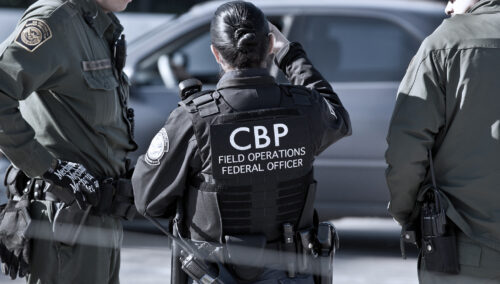The term “sanctuary city” is often used incorrectly to describe trust acts or community policing policies that limit entanglement between local police and federal immigration authorities. These policies make communities safer and increase communication between police and their residents without imposing any restrictions on federal law enforcement activities.
1. What is a “sanctuary city” and where did the term come from?
Currently there are 326 counties, 32 cities and four states which limit local law enforcement’s involvement in federal immigration enforcement.
- The phrase “sanctuary city” was born out of a church-centered movement in the 1980s. During that time, thousands of Central American refugees came to the United States seeking protection from civil wars, and many were denied asylum. Churches, synagogues, and other religious institutions banded together to oppose the return of these refugees to the countries where they had been persecuted, and this became known as the Sanctuary Movement.
- The term “sanctuary city” is a misnomer when used to describe community policing policies which attempt to eliminate fear from those who worry that reporting a crime or interacting with local law enforcement could result in deportation. Some have confused “sanctuary city” policies with the notion that immigrants in these communities are insulated from any immigration enforcement action against them. In fact, nothing in a so-called sanctuary city policy prevent federal enforcement actions. Some cities and localities—including San Francisco—have used the term “sanctuary” in their community policing policies in solidarity with the movement of the 1980s.
2. Why do localities, cities, and states adopt community policing or trust laws?
Several hundred state and local police departments across the country have enacted community policing policies because they make communities safer and they help ensure that law enforcement officers do not run afoul of the law by detaining persons they do not have legal authority to hold (i.e., in violation of the constitutional requirements of the Fourth Amendment).
Of the hundreds of jurisdictions with such policies, all but six were enacted after 2011. These policies were largely in response to a program called Secure Communities, which the Department of Homeland Security (DHS) had fully operationalized by 2012. Under Secure Communities, Immigration and Customs Enforcement (ICE), a division of DHS, began getting fingerprints for every individual as soon as they were booked and taken into custody by state and local law enforcement. As a result of this information sharing between local law enforcement and ICE, many undocumented immigrants were taken into immigration custody and deported under Secure Communities. The program shattered trust between immigrant and other community members who feared that interactions with the police could expose their loved ones and neighbors to the risk of deportations. Although Secure Communities was discontinued in November 2014 and replaced with the Priorities Enforcement Program (PEP), the practice of sharing of fingerprints at the time of booking continues under PEP. Consequently, ICE has information about noncitizens who enter the criminal justice system and is able to make decisions—with or without the involvement of local law enforcement—about whether to pursue immigration enforcement.
How do community policing policies make communities safer?
Community policing policies encourage all members of the community, including immigrants, to work with the police to prevent and solve crime. As Tom Manger, Chief of Police for Montgomery County and President of the Major Cities Chiefs Association, said,
“To do our job we must have the trust and respect of the communities we serve. We fail if the public fears their police and will not come forward when we need them. Whether we seek to stop child predators, drug dealers, rapists or robbers—we need the full cooperation of victims and witness. Cooperation is not forthcoming from persons who see their police as immigration agents. When immigrants come to view their local police and sheriffs with distrust because they fear deportation, it creates conditions that encourage criminals to prey upon victims and witnesses alike.”
Law enforcement agencies and associations from across the country have echoed this sentiment by supporting community policing policies and opposing attempts by the federal government to mandate immigration enforcement cooperation.
- The Law Enforcement Immigration Task Force, comprised of more than 30 police chiefs, sheriffs, commissioners, and lieutenants from across the country, explained, “Immigration enforcement at the state and local levels diverts limited resources from public safety. State and local law enforcement agencies face tight budgets and should not be charged with the federal government’s role in enforcing federal immigration laws.”
- According to Dayton Police Chief Richard Biehl, Dayton’s community policing policies “have been successful in building trust and making our city safer,” and have led to a nearly 22 percent reduction in serious violent crime and a 15 percent reduction in serious property crime in Dayton since the adoption of those policies.
What does all this have to do with complying with the Fourth Amendment?
In addition to the serious public safety benefits that community policing policies provide, many communities limit their involvement in immigration enforcement because the legality of detainers is in question. Under the Fourth Amendment, a person generally may not be detained without a warrant. Courts have ruled that states and localities that honor ICE detainers (i.e., ICE requests to hold a person even though they are otherwise eligible for release from criminal custody) may be held liable for Fourth Amendment violations. Several counties have been forced to pay six-figure settlements to individuals as a result of holding them on detainers longer than 48 hours. As a result, many jurisdictions require DHS to obtain a judicial warrant in order to justify detaining a person for immigration enforcement.
3. Isn’t immigration enforcement a federal responsibility?
Immigration laws and policies affect a broad range of U.S. interests. As the U.S. Supreme Court noted in Arizona v. U.S., “The Government of the United States has broad, undoubted power over the subject of immigration…The federal power to determine immigration policy is well settled. Immigration policy can affect trade, investment, tourism, and diplomatic relations for the entire Nation, as well as the perceptions and expectations of aliens in this country who seek the full protection of its laws.”
- There is no local or state community policing policy that prevents ICE from enforcing federal immigration laws.
- When a law enforcement agency takes a suspect into custody and books him or her, the person’s fingerprints are sent automatically to ICE, which has ample resources to investigate and initiate enforcement actions against noncitizens who fit within the agency’s enforcement priorities.
Conclusion
Instead of attempting to micromanage how states and localities interact with DHS, Congress should get to the important job of passing immigration reform. There is no doubt that our nation is safer when everyone is accounted for and fully documented. A major benefit of comprehensive immigration reform is that every person in this country would get documents and be “on the grid” of U.S. life—with driver’s licenses, social security numbers, and other forms of identification. Rather than continue to leave millions of immigrant families in a desperate limbo of fear and uncertainty, such a system would help us make smarter and more strategic decisions about our nation’s safety and security, and in a way that respects due process.



